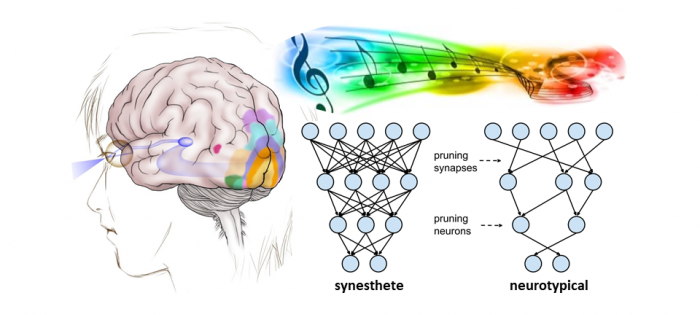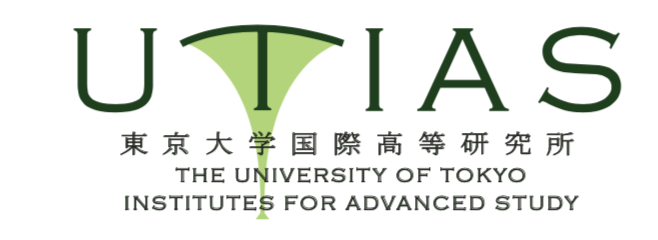
Synesthesia (共感覚) may result from incomplete pruning (剪定) of neural connections in the brain during infancy, a study by Director Takao Hensch of International Research Center of Neurointelligence (IRCN)The University of Tokyo Institutes for Advanced Study and colleagues in Canada finds. In adults with synesthesia, a stimulus triggers a normal percept as well as an additional percept, often in another sensory modality. For example, synesthetes may consistently “see” a particular color when exposed to a specific sound. Daphne Maurer and colleagues tested the hypothesis that the synesthete brain may not undergo the typical amount of pruning – a normal developmental process in which synaptic connections that are rarely activated by early environmental input will atrophy during infancy. Experience‐dependent pruning is thought to drive a phenomenon called perceptual narrowing, in which infants become worse at distinguishing between stimuli that are rarely experienced than those that are frequently experienced.
The authors assessed perceptual narrowing through behavioral experiments, in which 41 synesthetes (age range: 17 to 43 years; mean age: 22.8 years) and 59 controls (age range: 18 to 24 years) were instructed to distinguish between stimuli from native (highly prevalent) categories (i.e., upright human faces, native‐language phonemes), as well as non‐native categories (i.e., inverted human faces, phonemes from a non‐native language, chimpanzee faces). Synesthetes were significantly more accurate than controls at distinguishing between stimuli from non‐native categories. Instead, performance between the two groups was similar for native categories.
The findings are consistent with the idea that incomplete pruning in the developing brain both dampens perceptual narrowing in synesthetes and may explain their atypical perceptual associations. Moreover, given the higher incidence of autistic‐like characteristics in adults with synesthesia, the paper provides evidence for testing new hypotheses about reduced perceptual narrowing as an index of altered critical period plasticity of experiential pruning‐‐as would also be expected in autism.
Reference: Daphne Maurer, Julian K. Ghloum, Laura C. Gibson, Marcus R. Watson, Lawrence M. Chen, Kathleen Akins, James T. Enns, Takao K. Hensch, and Janet F. Werker (2020) Reduced perceptual narrowing in synesthesia. Proceedings of the National Academy of Sciences of the United States of America. Published online: April 22, 2020. DOI:doi.org/10.1073/pnas.1914668117


